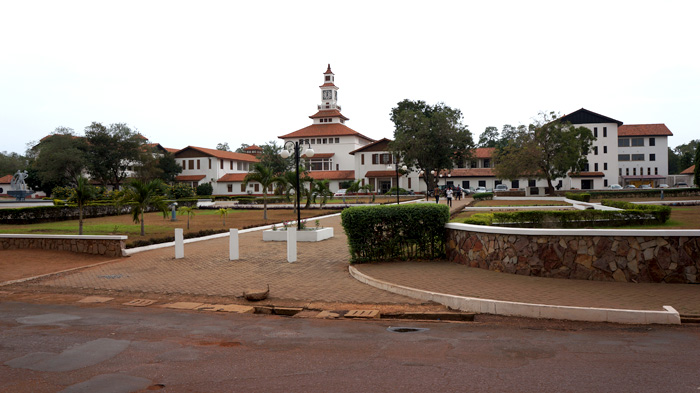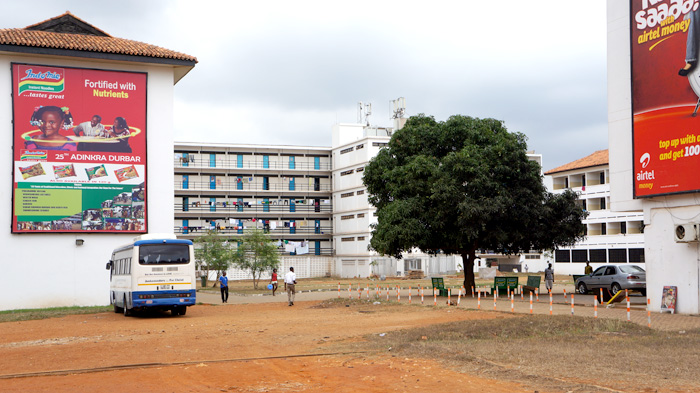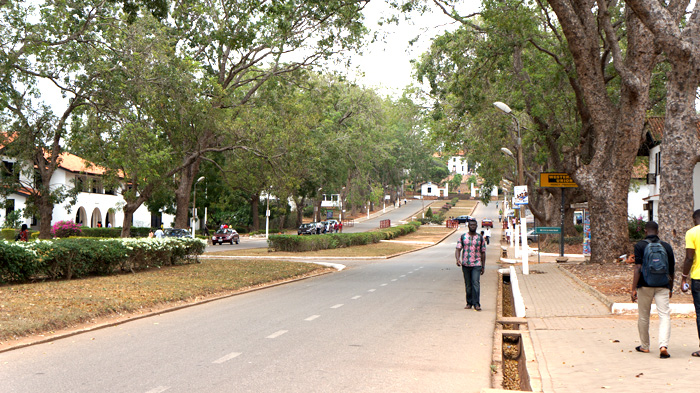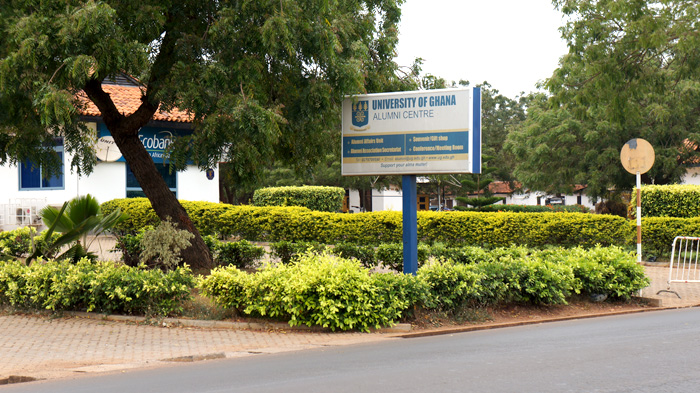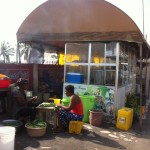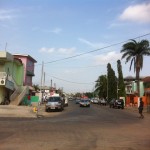Well, after a long trek home, I’m back in Niagara and adjusting to the cold weather and the relative calm. I must say, it seems a bit strange not to be surrounded by the hustle and bustle of Accra – no cars honking, no chickens or goats wandering about, no roadside kiosks, and while there are a lot of shoppers out and about yesterday in Niagara, I didn’t see a single one balancing their wares upon their head. I must say that I definitely miss Accra!
So a quick recap of my final week….
Makola Market:
Last weekend provided another wonderful glimpse of life here in the city.
Following the advice of some of my co-workers at CRI, I went to Makola Market, a very large market in west Accra. The women that I work with suggested that it might be a good idea for us to enlist a local to accompany us, as Saturdays are the busiest day for the market. Kojo is a taxi driver that lives in our neighbourhood – he gives us a lift to work each day. He’s a terrific guy – always providing details about what we are seeing en route to work. As it turns out, Kojo was free on Saturday and routinely shops at Makola, so he agreed to join us for the morning.
Well, this turned out to be a very good idea. Makola was overwhelming with heat, colours, shoulder-to-shoulder crowds and the constant noise of buying/selling, as well as cars honking. That said, it was amazing and one of my favourite experiences!
Take a look at the photos above – the colours are incredible and you can buy anything – there are enormous sections of the market, each selling different types of goods – food, produce, footwear, clothing, fabrics, jewelry, household stuff, etc. Men and women are weaving their way through the crowds to restock their the kiosks, all carrying their goods on top of their head. I saw a woman about my size carrying a refrigerator on her head. Not kidding!
It is an enormous market that the locals use for themselves. No tourists – a true working market. All prices are bargained for – and you know that is not my strength – so Kojo was a great help in ensuring we did not pay far too much. Most is outdoors in the blazing heat, but they do have some sections indoors – many tiny kiosks crammed inside some very very old buildings. To be honest, that part was more than a bit unnerving – very old structures, packed well beyond capacity. Unsettling to think of what could happen. All in all, a very cool experience/adventure. For those of you familiar with any of the Niagara markets, St. Lawrence Mkt in Toronto, or even Keady (south of Owen Sound) – hate to say it, but they pale in comparison:)
Signs from the Road:
First off, Twi is the primary language here. While most speak some English, everyone speaks Twi. Children learn English in school – it is typically the language of instruction – but home and community are a blend of Twi with English.
Some of my favourite sights were the roadside shop signs. It seems like it may lead to good fortune if you include some religious references in your shop name. Some of my favourite shop signs:
Rome was not built in a day
Nearer my God Fashion Centre
Jesus Metal Works
Christ the Builder’s Friend
God Willing _____ Enterprise
U of Ghana, Legon Campus:
On Sunday I made my way over to the University of Ghana – Legon Campus, which is north-east of Accra in an area called Legon (not far from where I was staying). As it was Sunday, I unfortunately did not get a chance to chat with any representatives, but we did have a chance to wander throughout the campus. It was a really great experience – the campus footprint is very large – seems to cover much more space than Brock does, and is much more spread out. But there are some features that seemed familiar. Residences were a hive of activity with students out playing football (soccer) in front, laundry hanging up outside dorm rooms, etc. What I believe was the main administrative building is set up high on a hill, with a lovely view of the university campus, as well as the city in the distance. The library is building was beautiful, with a large fountain and landscaped area in front. The campus almost had a Spanish feel to its architecture – tile roofs and lots of archways. I believe this campus is home to approx. 25,000 students, so quite substantial.
Final Week at Child Rights International:
During my final week, we moved offices and I have no doubt the staff will really enjoy the improved space. The old office presented some challenges – while I did not encounter much rain during my time in Accra, (it was the beginning of the dry season), they had endured significant flooding, with routine loss and damage to computer equipment etc. The new spot has most offices on the second floor, meaning much less risk.
During my time at CRI, we submitted 2 project proposals for funding and we worked on improving internal communications (not easy with a central admin office and several field offices in small communities across several regions of the country) and strengthening procedures for hiring and training. I am hopeful that the ideas that we worked on will improve efficiencies and help to clearly communicate the great work that CRI does in advocating for the protection of children.
Global Transitions:
On my last day in Accra, I had the pleasure of meeting some outstanding Brock students participating in the Global Transitions program, offered with the assistance of WUSC.
This is a one-of-a-kind ‘gap year’ program designed to provide a select group of high school graduates with an opportunity to begin their career as Brock students, while taking some time away from traditional studies to participate in an international development project. Our students were being recognized by their host placements (two elementary schools here in Accra) and the team at World University Service of Canada (Ghana). The students were wrapping up 3 and a half months here in Accra and preparing to head home. Most will begin full time studies next fall, using their time until then to work and travel. I can’t tell you how impressed I was with these students – they each took a huge leap of faith, taking an unconventional path to a continent and country that they had little experience with. Their confidence and maturity was incredibly impressive! The impact that they’ve had in their placements was evident – the host teachers raved about their commitment and contribution to classroom life and shared genuine sadness at their departure. It was a real treat to see our students shine!
Leave for Change – Final Thoughts:
Participating in the Leave for Change program has been a wonderful experience, both professionally and personally. I was given an opportunity to learn and apply my knowledge and skill set in an entirely different professional and cultural setting – it was challenging, refreshing and so very rewarding.
Working in a different cultural setting was a highlight. I knew little about Ghana prior to volunteering, and while I am not yet an expert, it is one corner of the world that I now have a better understanding of. And you can bet that next spring when the World Cup is on, I’ll be cheering for the Black Stars!
If there is one piece of advice I can offer, I’d encourage you to seek out opportunities such as Leave for Change if you have a chance. Pushing myself into unfamiliar territory was both exciting and rewarding – and a bit scary at times. It was definitely a challenge, in a very good way!




